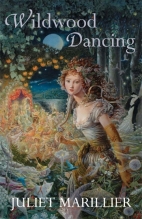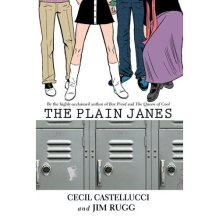
Donna Jo Napoli is a writer I’ve been meaning to read for some time. Since I’m participating in the Twisted Fairy Tale Challenge, and Napoli has written many such stories, it would have been a shame not to read one of her books for the challenge. I chose Bound. It was a tight race between this one and Hush, which has one of the most gorgeous covers I’ve seen of late. See:

So beautiful (sigh). But back to Bound. Here we have a Cinderella story, set in Ancient China. Xing Xing (pronounce “Shing Shing”) lives with her Stepmother and half-sister, Wei Ping, after the death of her beloved father. Xing Xing’s Stepmother is a thoroughly nasty, entirely self-absorbed woman (of course), and Xing Xing lives a life of servitude, with little hope for the future. She is bright, with a gift for poetry and calligraphy, and has a kind heart and quiet strength. Much of Xing Xing’s time is spent caring for Wei Ping, who suffers a great deal due to her foot bindings, kept on at her mother’s insistence, since according to custom, Wei Ping’s prospect for a good marriage depends on the shape and size of her feet. Xing Xing is spared this painful tradition since she is as good as a slave in her home. You won’t find a fairy godmother in this story, but you will encounter a magical carp and a pair of golden slippers. It is Xing Xing’s forbearance, loyalty and courage that leads her towards freedom and a promising future.
All three women in this story are trapped in some way. Xing Xing is held down by her cruel Stepmother. Wei Ping cannot walk because of her mutilated, bound feet. While Stepmother is by anyone’s definition, a twisted woman, the death of Xing Xing’s father means that the family’s circumstances are precarious. The Stepmother is a nut job, but she is just as captive to the norms and expectations of society as her daughters. She has to find Wei Ping a suitable husband. Xing Xing is bound to her family in ways that hurt and limit her, but at the same time, she finds strength and support in her devotion and connection to the spirit of her ancestors, particularly her mother. I like how readers are left to consider at the end of the story if Xing Xing is simply trading one form of servitude for another, in this case, a royal marriage. The themes of captivity, loyalty and ancestry are inter-related in though-provoking ways in Napoli’s story.
Xing Xing is one of those entirely independent, clever and resilient heroines that readers will root for and remember. Her desire to take risks to create the future she wants makes her feel surprisingly modern, and makes her a character that teens can learn from. My first encounter with Napoli leaves me eager for another.

 If, like me, you’ve had Juliet Marillier’s Wildwood Dancing buried deep in your To Be Read pile, listen up:
If, like me, you’ve had Juliet Marillier’s Wildwood Dancing buried deep in your To Be Read pile, listen up:












